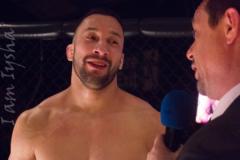Sep 17 • General discussion
Ecological Training for Submission Grappling: Kids Coach Support
If you’re a new coach, you’ve probably heard people talking about ecological training, constraints-led coaching, or alive training. It all sounds fancy, but here’s the truth: ecological training is just about making practice look and feel more like the real sport.
Instead of drilling moves in isolation a hundred times, we put athletes—especially kids—into game-like problems where they have to figure things out.
Think less “copy my steps” and more “let’s play a game where you learn by solving problems.”
Why Ecological Training Works for Kids
Kids learn by doing and exploring, not by sitting still and memorizing.
If you make training fun, game-based, and realistic, they:
- Stay more engaged (less bored drilling moves endlessly).
- Develop problem-solving skills that transfer to real rolling.
- Build adaptability, not just a list of techniques.
The Core Idea
Instead of teaching “Move A, then Move B, then Move C,” you:
- Create a small game (constraint). Example: “You’re stuck under side control. Your job is to escape. Top person’s job is to hold.”
- Let them figure it out (exploration). They’ll try frames, bridging, shrimping, or whatever comes naturally.
- Guide, don’t script (coaching). You step in with nudges: “What if you use your arms instead of just legs?”
Practical Examples for Kids’ Classes
Here are simple ways to add ecological games:
1. Escaping Mount
- Game: Bottom player starts mounted. Top tries to stay on. Bottom must escape to guard or turtle.
- Constraint: Top can only use one arm. This makes success possible for beginners.
2. Guard Passing
- Game: Bottom sits up guard. Top must pass in 30 seconds.
- Constraint: Top can only grip with one hand.
3. Back Defense
- Game: One kid has seatbelt on the back. The other must escape before being submitted.
- Constraint: Attacker can only use strangles, no arm locks.
How to Coach Without Over-Coaching
Resist the urge to lecture. Instead:
- Use questions instead of answers: “What worked best for you?”
- Use nudges, not instructions: “Try keeping your elbows tighter and see if it helps.”
- Keep games short and fun (30–90 seconds, lots of resets).
Common Mistakes to Avoid
- ❌ Making it too easy (kids won’t learn if there’s no challenge).
- ❌ Making it too hard (they’ll shut down if they never succeed).
- ❌ Talking too much (keep your coaching bite-sized).
- ❌ Running endless drills without opposition (that’s not ecological).
Quick Checklist for a Kids’ Ecological Class
- ✅ Every drill feels like a mini-game.
- ✅ Every game has winners/losers, but both sides learn.
- ✅ Constraints scale difficulty (make it harder or easier depending on the group).
- ✅ Kids spend most of class moving and playing, not lined up watching.
Final Takeaway
Ecological training isn’t complicated. It’s just games with purpose.
Set a problem, give constraints, let the kids figure it out, and guide them along the way.
That’s it. That’s the whole “secret.”
3
2 comments
powered by

skool.com/chris-miah-coaching-6869
An exclusive group to support elite performers in combat sports.
Suggested communities
Powered by
